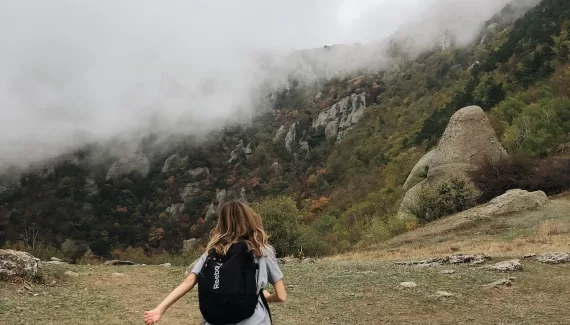When gearing up for a hike, choosing the right fit is crucial for comfort, functionality, and overall enjoyment of the outdoors. Here’s a guide to assembling the perfect hiking outfits for women, focusing on various types of hikes and weather conditions.
1. Basic Hiking Outfit
For casual hikes or day trips, a basic hiking outfit should prioritize comfort and versatility:
- Top: Start with a moisture-wicking base layer, such as a breathable T-shirt or long-sleeve shirt, depending on the weather. Look for materials like polyester or merino wool that help manage sweat and keep you dry.
- Bottom: Opt for comfortable, flexible hiking pants or shorts. For cooler weather, choose pants with a bit of stretch or zip-off options that convert to shorts. Cargo pants with plenty of pockets are practical for carrying essentials.
- Footwear: Choose lightweight, supportive hiking shoes or trail runners with good traction. They should offer ample cushioning and fit snugly to avoid blisters.
- Accessories: Wear a hat or cap for sun protection and carry a small backpack or daypack to hold essentials like water, snacks, and a first-aid kit.
2. Layered Hiking Outfit
For hikes in varying weather conditions, layering is essential:
- Base Layer: A moisture-wicking base layer helps regulate body temperature and keeps sweat away from your skin. Choose a lightweight, breathable top.
- Mid Layer: Add an insulating mid-layer, like a fleece jacket or a lightweight down vest, for warmth. This layer should be easy to remove if you warm up during the hike.
- Outer Layer: A weather-resistant shell or rain jacket protects you from wind, rain, and snow. Look for features like adjustable hoods and cuffs for added protection.
- Bottoms: Use breathable, moisture-wicking hiking pants or shorts. Consider layering with thermal leggings if it’s particularly cold.
- Footwear: Waterproof hiking boots or trail shoes are ideal for mixed weather. They should offer good ankle support and traction.
3. Cold Weather Hiking Outfit
For hikes in cold or snowy conditions, prioritize warmth and protection:
- Base Layer: Choose a thermal base layer made from materials like merino wool or synthetic fabrics designed to retain heat.
- Mid Layer: Wear a thick fleece or insulated jacket to provide extra warmth. Consider a down or synthetic insulated jacket for very cold conditions.
- Outer Layer: A robust, waterproof, and windproof shell is essential for protection against harsh weather. Look for features like ventilation zippers to manage heat.
- Bottoms: Insulated or thermal-lined pants are important for cold weather. Look for waterproof options if hiking in snow or rain.
- Footwear: Insulated, waterproof boots with good traction are necessary for snowy or icy conditions. Pair them with warm, moisture-wicking socks.
- Accessories: Wear a warm beanie, gloves or mittens, and a scarf or neck gaiter to protect extremities. Gaiters can also help keep snow and debris out of your boots.
4. Summer Hiking Outfit
For hikes in hot weather, focus on staying cool and hydrated:
- Top: Opt for lightweight, breathable, and moisture-wicking tops. A short-sleeve or sleeveless shirt made from technical fabrics helps keep you cool.
- Bottoms: Wear lightweight shorts or breathable hiking pants with ventilation features. Consider options that wick away sweat and dry quickly.
- Footwear: Choose well-ventilated trail shoes or hiking sandals that offer support and grip. Ensure they are comfortable and designed to handle hot and potentially rocky terrain.
- Accessories: Use a wide-brimmed hat for sun protection and wear sunglasses with UV protection. Carry a hydration pack or water bottle to stay hydrated, and consider using a cooling towel if needed.
5. Versatile Hiking Outfit
For hikes that transition between different environments or activities, versatility is key:
- Top: A versatile top with moisture-wicking and quick-dry properties is ideal. Layer it with a lightweight, packable jacket for changing weather conditions.
- Bottoms: Convertible pants that zip off into shorts offer flexibility. Choose bottoms with stretch and comfort for varied terrain.
- Footwear: Multi-purpose trail shoes that offer support and traction in different conditions work well. Ensure they are comfortable for long distances.
- Accessories: A versatile daypack with hydration compatibility and multiple compartments helps carry all essentials. Sunglasses, a hat, and sunblock are also important.
Conclusion
Choosing the right hiking outfit involves considering the type of hike, weather conditions, and personal comfort. From basic outfits for casual trails to specialized gear for extreme weather, the right fit ensures an enjoyable and safe hiking experience. Prioritize functionality and comfort while maintaining your personal style to make the most of your outdoor adventures.



No Responses Yet